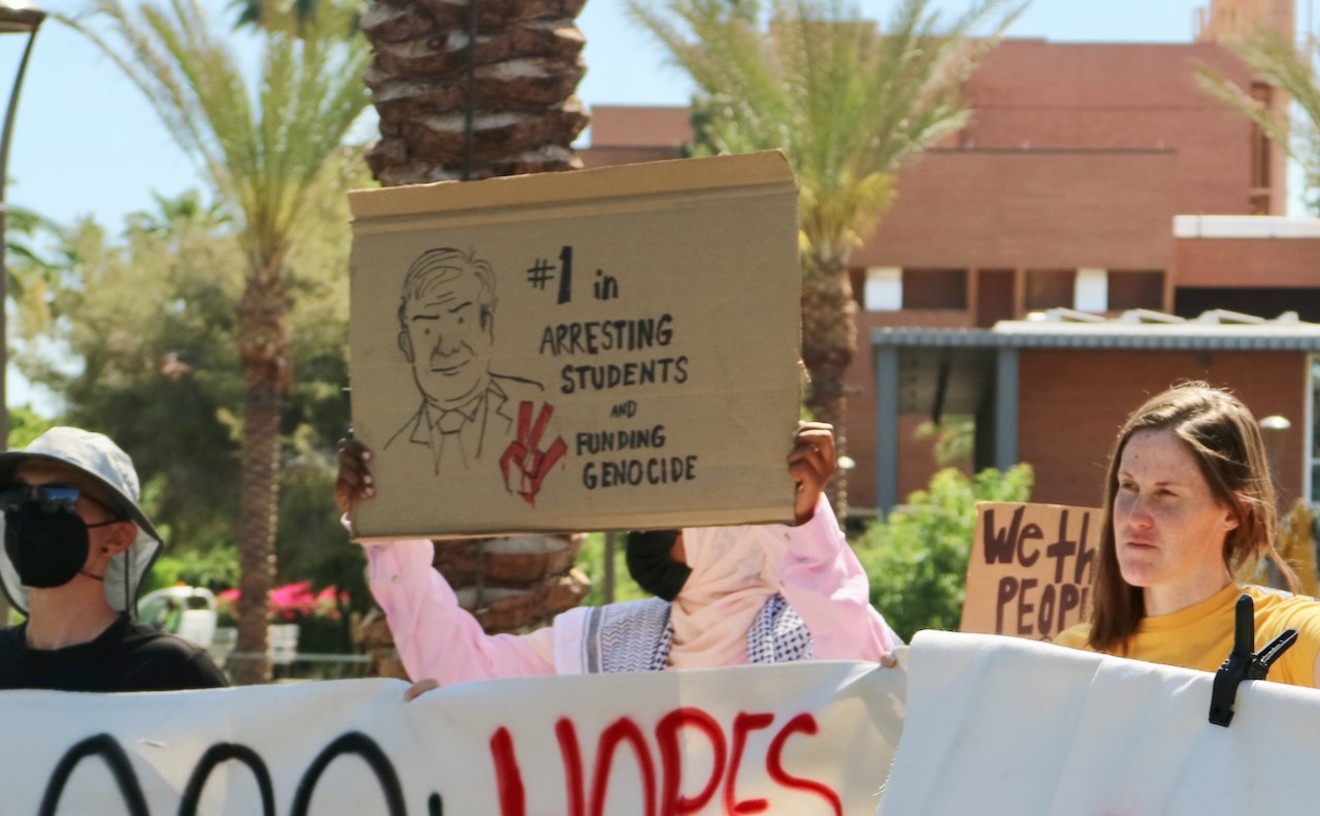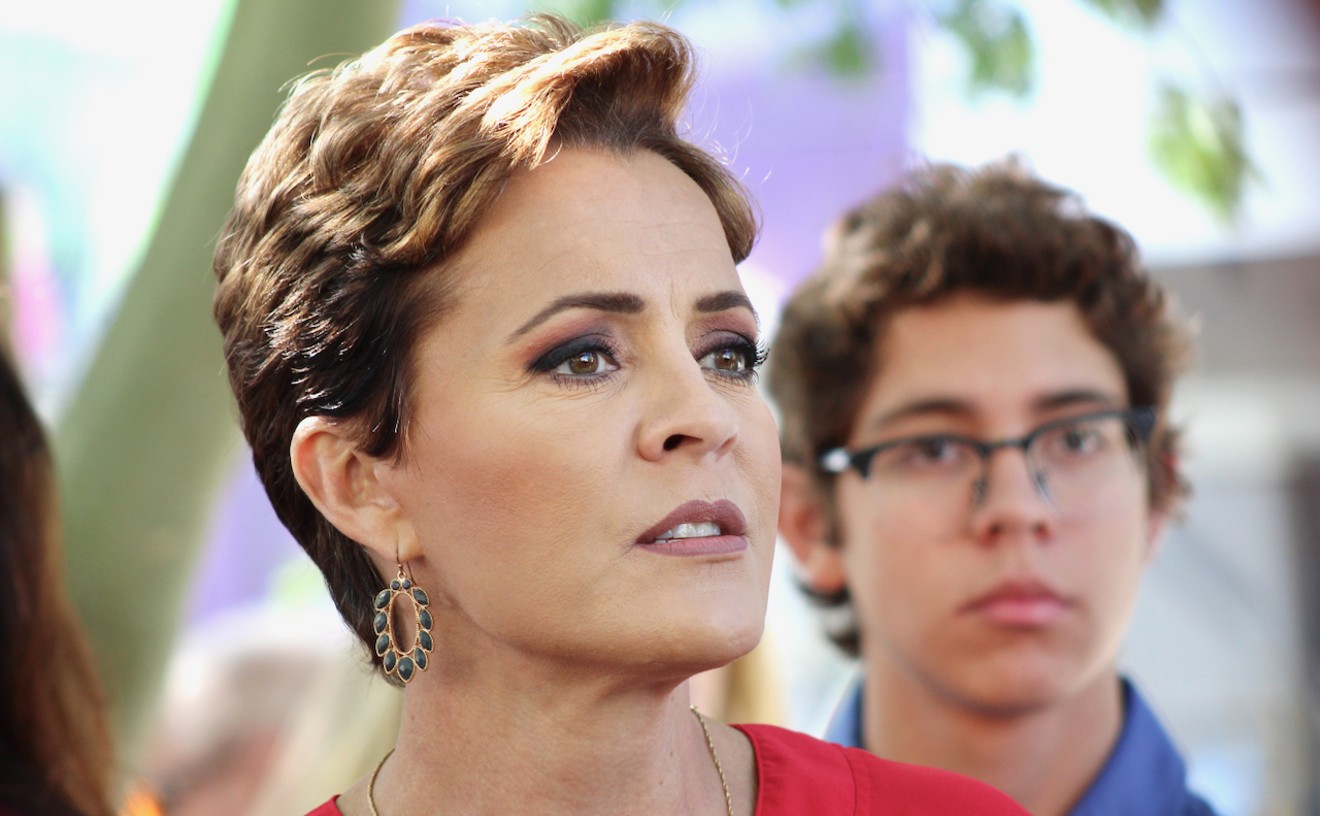And I've long been a strong supporter of Native American rights.
But in recent days I have become outraged over the astounding hypocrisy of both groups in their opposition to a proposal that would allow for a relatively small expansion of the Arizona Snowbowl.
The red and green coalition is vehemently opposed to the U.S. Forest Service's approval of a plan that allows the Snowbowl to use a portion of Flagstaff's reclaimed water for snowmaking on the San Francisco Peaks.
Snowmaking would guarantee that the Snowbowl would be open at least 100 days during ski season and give the operation far more economic stability. While this winter has been blessed by heavy snow, the mountain was parched in 2001-02 and the ski area was open only four days.
The economic stability that comes with snowmaking will allow the owners to build new lifts, improve the lodges, build a tubing snow park suitable for young children, and expand ski runs from 135 acres to 205.
"Our role here is to teach people how to ski and to provide family recreation," says Snowbowl manager J. R. Murray.
But that's not what Navajo Nation President Joe Shirley believes is going to happen to the mountain -- which, by the way, is not on reservation land.
Shirley claims the Snowbowl expansion and use of reclaimed water for snowmaking will have a devastating effect on Native peoples throughout the region.
"When you build on it, when you talk about putting wastewater on it, you are desecrating our life. You are chipping away at our way of life and committing genocide," Shirley says.
Genocide?
Give me a break!
Meanwhile, Shirley's environmental buddies are spewing forth equally inane statements.
"This plan is culturally and environmentally destructive," says Andy Bessler, a representative of the Sierra Club.
Come on, Andy. I'm with you on most of the Sierra Club's agenda, but not this.
You would think the Forest Service was about to nuke the San Francisco Peaks and ship the radioactive rubble to China to be turned into electronic trinkets.
One of the nation's first ski areas, open since 1938, the Snowbowl leases 777 acres from the Forest Service for its entire operation. The ski area is on only a sliver of the vast mountain and is surrounded by 18,960 acres of federal wilderness area that can never be developed.
The wilderness protects significant Native American cultural resources, endangered plants and animals and sacred sites. The Arizona Snowbowl operation does not threaten the sanctity of these areas.
The Snowbowl also offers the public a unique and relatively unspoiled recreational opportunity. Most of the people who ski on the mountain each winter come from the Phoenix metropolitan area.
Unlike most Western ski resorts, the landscape near the Snowbowl will remain uncorrupted by glitzy restaurants, expensive condominiums and trendy clothiers. There's a dirt parking lot and couple of rustic lodges that sell lousy food and expensive beer.
The reclaimed water meets state and federal standards and has been used by the city of Flagstaff for more than a decade to water parks, schoolyards and golf courses. What's not used is discharged down the Rio de Flag and eventually seeps into the groundwater.
The cries of environmental destruction and cultural murder from Navajo and Hopi leaders ring hollow.
At the very same time Shirley and Hopi tribal chairman Wayne Taylor are agonizing over the Snowbowl, they are strongly supporting a plan that will continue ongoing massive environmental destruction on their respective lands.
Both men want to continue strip coal mining operations on more than 20,000 acres of another sacred mountain -- Black Mesa. For the last 35 years, Peabody Western Coal Company has operated huge mines on Navajo and Hopi land.
Peabody also pumps more than 1.3 billion gallons of pristine groundwater a year from beneath the reservations for use in a slurry pipeline that transports pulverized coal from the mine to the Mohave Generating Station 273 miles away in Laughlin, Nevada.
Mohave is one of the dirtiest coal plants in the West. Its emissions pollute the skies above the Grand Canyon and half a dozen other national parks in the Southwest. The electric plant is slated to be closed at the end of this year unless its operator -- Southern California Edison -- agrees to invest more than $1 billion in pollution controls.
Not only is the plant a major air-pollution source, the groundwater pumping is adversely affecting important Hopi springs. Former Hopi tribal chairman Vernon Masayesva has steadfastly fought to stop Peabody from continuing to pump groundwater.
The springs are the linchpin of traditional Hopi culture.
Masayesva and the group he founded, Black Mesa Trust, have developed alternatives to continued coal mining on the reservations, including development of a massive solar-generating facility, a wind farm and far cleaner coal gasification technology.
But it is the easy money from coal mining that Shirley and Taylor are after. The coal mine provides 35 percent of the Hopi budget and 15 percent of the Navajo budget.
Neither Shirley nor Taylor appears interested in moving their tribes forward with green technology. Instead, they continue to embrace environmentally destructive and culturally devastating strip mining.
Their respective tribal governments are holding secret negotiations with California Edison to keep both the power plant and the Black Mesa mine open for decades to come.
Shirley and Taylor can't have it both ways.
They can't claim that the fate of their culture rests on stopping the expansion of the Snowbowl when at the same time they are willing to sacrifice their own tribal lands in exchange for cold, hard cash.
Environmental groups have long exploited the Native American tradition of sacred places to fight their battles to preserve wilderness areas. This was vividly displayed in the pitched struggle to build telescopes on Mount Graham in southeastern Arizona.
And it has become a rallying cry in this latest skirmish over the San Francisco Peaks. It's always the soulful Native American who steps forward as the high priest of sacred geography. In the background lurks the environmentalist, equipped with charts and data on tree-trunk diameters and spotted-owl nesting sites.
Together, they wield a powerful sword that is needed to fight the corporations and politicians willing to destroy practically every inch of this land for profit.
But the idea is offensive to me that places like the San Francisco Peaks can be hallowed only to Native Americans. That somehow we interlopers will never understand the sacredness of place.
Every year my parents travel from northern Virginia to the San Francisco Peaks to say their prayers.
They go to the mountain alone.
I often wonder what tremors must ripple through their hearts on these annual pilgrimages.
My father's a retired sailor and says little about certain things. And my mother has been by his side for nearly 51 years, since the day they were married a week after my dad graduated from the U.S. Naval Academy in June 1954.
They carry their pain in stoic silence. Their generation was born in the Depression, grew up during World War II, saw their heroes of the 1960s slain by assassins and their academy classmates butchered in rice paddies.
Now in their 70s, they go each Sunday to the Methodist church down the street in Fairfax, Virginia. It's a way to bide time before they come back once again to the San Francisco Peaks to be with their dead son, the youngest and brightest of five children.
I know they must listen for him in his eternal home tucked deep into the stands of ponderosas and aspens. I imagine that now and again a timeless voice emerges from Arizona's volcanic crown and drifts across the heavens and slips into their souls.
I pray they feel a moment of peace and joy.
My brother, Don, lived on the San Francisco Peaks in the last years of his life. He knew his time was short, and when he passed away at age 33, his ashes were taken to the top of Humphreys Peak, the highest point in Arizona.
Nine years have passed since that mournful November day, and, by now, his dust has seeped deep into the porous rocks at the heart of the Peaks.
Like my parents, I too go to the Peaks at least once each year. It's become a family ritual to take my two sons to enjoy the snowy wonderland and savor our fleeting time together.
They snowboard.
I ski.
I've watched the kids grow up on the mountain. From the first time they tumbled down the bunny hill as youngsters, to today, as they carve down black diamond runs, gracefully shifting their weight from heel to toe and back again, broad smiles stretched across their fearless faces.
As I rode the lift last week with my 15-year-old, we laughed and joked while watching a steady stream of ballsy athletes grinding their boards across rails and catapulting over jumps carved into the terrain park below our dangling feet.
We were thankful for a moment when we were moving slowly above the trees with a magical landscape before our eyes. We talked about the beauty of the mountain and marveled how far we could see.
As we approached the top of Agassiz, I grew silent, hoping to hear Don's spirit whispering from above the tree line.










